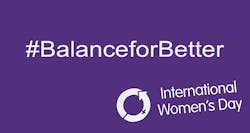Gender Balanced Business is Good for Economy: International Women’s Day
Started in 1911, International Women’s Day has grown and is currently supported by over a million people. The theme in 2019 is “Let’s build a gender-balanced world." The day is meant to bring awareness to the role that women play in all aspects of life and to increase their involvement.
The organizers of the event point out that gender balance is applicable across the board and is not a “women’s issue, it’s a business issue.”
The effect of gender balance on business performance has been studied over the years. Research from Catalyst showed that companies with a higher percentage of women in executive positions have a 34% higher total return to shareholders than those that do not.
Another Catalyst study found that companies with the most women directors outperform those with the least on return on invested capital by 26%.
While many companies are championing these goals, as evidenced by the best practices shown on the group's website, there is still much progress to be made.
A study released on March 6 from Korn Ferry and the Conference Board found that 62% of respondents believe the representation of women in leadership positions has improved during the last five years. However, 66% believe that there still is an inadequate representation of women in leadership positions in their organization today.
According to the survey, gender inequity is significantly higher at top levels within organizations. While nearly half of individual contributors are women, that percentage dwindles to little more than a fifth at the senior vice president and c-suite levels.
The study found a high level of dissatisfaction with female representation in leadership roles, with 66% of respondents saying the number of women at the vice president level at their own organization was inadequate, and 65% agreeing that there was not enough female representation in the c-suite.
“HR and business executives need to take a step back to better understand and address the systemic reasons behind the gender imbalance,” said Rebecca L. Ray,, executive vice president of Human Capital at The Conference Board. “Reasons include pay inequity, hiring manager bias and accountability, a lack of sponsors and champions, as well as the lack of programmatic support for the integration of work and life.”
The report offers advice on steps businesses can take to help women advance at all levels of the organization, including:
-- Challenging women early in their careers
-- Redesigning talent management systems to mitigate bias and disrupt historical practices
--Creating an intentionally inclusive climate
-- Providing differentiated development opportunities and experiences
--Developing a sponsorship program aimed at women advancement opportunities
-- Offering stretch assignments and personalized leadership experiences
